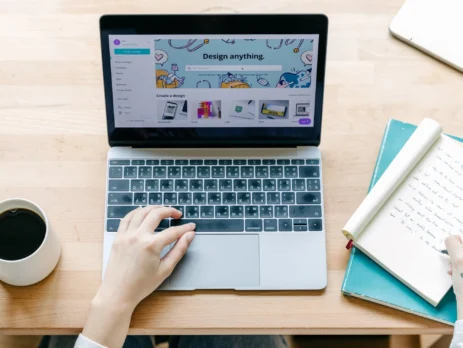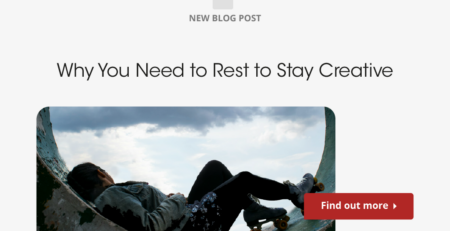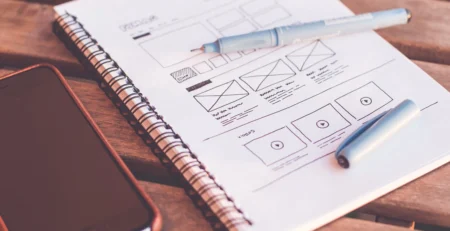What is Behavioral Design, and Why Does It Matter?
Have you ever wondered why certain website designs seem to effortlessly guide people toward the actions a business wants? Or how some interfaces subtly encourage better decisions from users? The answers may lie in an area of user experience called behavioral design. Whatever your goal is, you can learn all about this method of design, as well as why it is fast gaining ground in the UX design world, in the following paragraphs.
What is Behavioural Design?
Behavioral design is all about subtly influencing user behavior for the better through small psychological nudges. At its core, it draws on research insights from fields like behavioral economics, cognitive psychology, and decision science to understand how people make choices in the real world. Then, these learnings are applied to digital experiences.
If you work in user experience design, behavioral design is an important perspective to understand. Essentially, UX is about creating helpful, meaningful digital products and services. But all too often, we focus only on usability and forget that humans are emotional, irrational creatures prone to cognitive biases.
This is where behavioral design comes in. By borrowing techniques from fields like behavioral economics, it offers UX designers new ways to positively influence user behaviors and decisions through an experience. It crafts experiences that are informed by how our minds naturally work so that interfaces can gently encourage better behaviors through subtle contextual prompts, feedback loops, social proof, and more. The goal of behavioral design is to guide users toward favorable outcomes without compromising their autonomy or feeling manipulated.
Why Behavioural Design Matters

Behavioral design has gained much traction in recent years, but many people still don’t fully understand why it’s such an important consideration for user experience professionals. We’ve already established that behavioral design is about influencing user behaviors. But does that mean it’s just about manipulating people? Not at all. When done right, behavioral insights can enhance experiences in many meaningful ways.
Rather than intimidating choices, behavioral design gently nudges users towards beneficial decisions while maintaining autonomy. It recognizes that cognitively, we all have biases that can derail even the best of intentions. Behavioral design sensitively addresses these innate tendencies and biases so user experiences can be optimized to align with human nature rather than fight against it.
Some key reasons why behavioral design deserves attention include:
Engagement and Retention
For anyone working in user experience, keeping users interested long-term is super important. And behavioral design really nails that through subtle ways of tapping into how our minds actually work.
Progress trackers can break things into smaller achievements, which plays right into that urge for a little dopamine hit when we accomplish things. It allows people to form engaging habits without even realizing it.
Meanwhile, optimal defaults gently guide actions from the start so that these behaviors are set in stone over time just through inertia alone. And declaring intentions publicly capitalizes on that drive we have to follow through since we want to be consistent with what we tell others. By satisfying psychological needs naturally rather than forcing them, these nudges result in far more loyal, engaged users staying around happily.
Conversions and Value
Behavioral design really helps with boosting desirable outcomes through subtle psychological nudges. Understanding what users truly want at a deep level can guide them toward high-value actions that satisfy those innate motivations.
Adding a little social proof or peer endorsements taps into that human need for assimilation. And well-crafted, just-in-time disclosures are very good at getting more users onboard authentically. Eventually, every action they take feels intuitive instead of pushy.
Happier Users
We all know that unhappy users just aren’t going to stick around. So behavioral design is useful for crafting experiences that keep users genuinely happy long-term through subtle psychological touches. This can be done by focusing first on naturally motivating our core intrinsic drives. Because who doesn’t want little dopamine hits from accomplishments or that warm fuzzy feeling of bonding?
It’s all about intuitively satisfying those universal human wants and needs, so the experience feels great rather than manipulative. The users remain oblivious to how their brains are being played yet still feel happily loyal afterward.
And as any savvy business knows, joyful repeat customers are the most valuable. So, if behavioral findings can be applied respectfully to influence these gratifications rather than commercial interests alone, it results in the best possible long-lasting outcomes for all parties.

Improved Decisions
As a UX designer, it’s important for those using your systems to make good choices because improper decisions can backfire. So, a big part of behavioral design is recognizing how our minds have inherent biases due to limited willpower and processing. But tweaks like prudent defaults that emphasize freedom while presenting the options in a relatable context can counteract those unseen influences.
It’s also about presenting the right amount of relevant information at the right time. Too much can overwhelm, while too little leaves people making guesses – both lead to wrong choices. However, behavioral designs that are tailored to individual needs not only improve satisfaction but also help people stick to intentions through self-set commitments. And the best part is that it all feels natural from the user’s perspective.
Balanced Goals
Factoring in what truly motivates users from the start means goals are responsible for what genuinely influences their behavior instead of just external pushes. Guiding their progress with internal satisfaction and social motives can help them form regular habits willingly rather than forcing them.
Wisely applying insights like emphasizing relatable social norms versus rigid ones can help promote autonomy. Users will feel onboard rather than railroaded. When the objectives are defined with a holistic view, including what really inspires people internally, it allows everyone to succeed harmoniously in the long run.
Principles of Behavioural Design
The four key principles that underpin behavioral design approaches include:
- Social Proof
As social creatures, we’re heavily influenced by what those around us do and think. Behavioral design leverages that through techniques like social proof to encourage beneficial behaviors. This involves giving users real information on how peers interact with a product, which can boost confidence in their decisions. It’s a simple way to influence engagement by capitalizing on our intrinsic desire to follow the crowd.
Designers will often highlight popular or top-rated options to make them seem like the social norm. From highlighting the most shared articles to displaying what menu items others frequently order, it can subtly guide choices without mandating anything as long as the proof feels genuine.
- Ostrich Effect
People don’t like facing uncomfortable truths sometimes. So, the “ostrich effect” plays into that tendency to stick our heads in the sand when presented with inconvenient facts or difficult choices. Behavioral design is aware of this quirk and can work for or against better decision-making depending on how it’s applied.

If warnings or important details are hidden too much, it can negatively impact outcomes. But highlighting potential downsides up front also risks turning people away entirely. There’s an art to providing just enough relevant info to guide choices while not overloading the brain. It’s about finding that sweet spot between mindlessly ignoring issues versus becoming paralyzed by them.
- Safe Searching
Behavioral design understands our brains can only handle so much information at once. The “safe searching” principle taps into that by nudging users through complex decisions bit by bit. Gently guiding the exploration process through relevant pre-filtered options or slowly revealing extras ensures that people don’t get snowed under early on before finding value. It’s designed to feel empowering rather than limiting by focusing attention on what really matters at each phase.
Users still maintain a sense of autonomy while being subtly steered clear of getting stuck over details or unhelpful detours. The goal is a smooth mental load, so better choices stick rather than becoming more confused.
- Satisficing
Most of us just want a decent enough solution without wasting tons of energy pondering every last option. So, behavioral design taps into our tendency to “satisfice” rather than optimize.
Our brains use mental shortcuts to find the first answer that meets our standards. If a choice satisfies core needs, we move on instead of browsing exhaustively. By catering to this innate preference, people can save energy and feel content instead of constantly chasing the best.
Things like emphasizing satisfaction over top-tier benefits, automatically setting solid options instead of showing all, or highlighting criteria that are good enough to respect how our brains operate. Users still maintain autonomy and pick choices that satisfy them.
Techniques of Behavioural Design
Gamification
Gamification is a sneaky but effective way of motivating folks through their innate desire to play and compete. It borrows elements from game design, like collecting points, leveling up, or rewarding achievements; behavioral designers can use this technique to encourage certain behaviors in a fun, engaging way.
It could be through earning badges for consecutive days using a fitness app or collecting virtual badges for recycling more. These gameful motivations tap into our natural instincts to seek status and accomplish goals. Of course, the incentives must align with what users value, not just some makeshift rewards. The keys are making the incentives feel meaningfully tied to user interests and ensuring activities don’t lose their intrinsic enjoyment by being too gamed up.
Positive Reinforcement and Encouragement
Everyone loves to get a pat on the back every now and then after achieving something. That’s where positive reinforcement comes in as a behavioral design technique. It recognizes and celebrates progress, even in small ways. This way, UX designers can encourage users toward targeted behaviors.
Whether it’s saying “great job” for logging activities one week or sharing personalized achievement updates, these affirming cues tap into our basic human need for acceptance and validation. Users are more likely to keep up good habits when they feel nurtured through gentle encouragement.
Of course, the praise has to feel genuine to be effective. But when done right, positive reinforcement subtly motivates continued improvement through the natural human desire to please others and maintain self-image.
Cues
We’ve all experienced that moment of realization when a simple prompt sparks us into action. Using cues, designers can implement subtle reminders or triggers within an interface to encourage specific behaviors.
It could be a friendly notification to take breaks when glued to our screens too long or an on-app reminder of fitness goals while using our health tracker. These thoughtful prompts tap into the human nature of being well-meaning but scatterbrained sometimes. Hence, users are more likely to complete intentions when given an occasional helping hand. The cues just have to be applied tastefully as occasional friendly bumps instead of constant pestering reminders.
Personalization
Personalization is all about customizing the user experience based on individual preferences and behaviors. The goal is to make people feel valued and increase engagement. It works because humans like feeling special and important. When a website, app, or service recognizes you as an individual, it can help build loyalty and connection.
Designers do this by collecting anonymous usage data over time. They analyze things like what content or features a person interacts with most. Personalization can then be used in recommending relevant playlists on a music app. Or filtering dating profiles to match someone’s interests and location for a higher chance of real chemistry.
Choice Architecture
It can sometimes be overwhelming when we’re presented with too many options. Choice architecture solves this by structuring the available alternatives so that developers can guide people toward the selections that benefit them the most without feeling like they’re being forced into anything.
An example is sorting health insurance plans from lowest monthly cost to highest upfront. This guides people towards preventative care plans versus sticking with nothing. It’s all about making the healthier, safer, or more helpful decisions the easiest path to take. As long as the choices themselves don’t change, just their order or features, users will still feel in control while getting nudged gently in the right direction.
Behavioral Design that Benefits All
Behavioral design is an approach that can really help people when done right and for the right reasons. As designers, all you need is an understanding of what motivates people on a deep level. This way, you can subtly shape experiences to guide choices with widespread good outcomes.
Though subtle, these minor changes don’t reduce their individual freedom but make preferred options simpler and more instinctual. As long as the data is secured well and the nudges aim for a greater good, behavioral design has proven able to optimize how people engage with things and cultivate gradual change that helps humanity using smart, psychologically informed design.
If you are a company that wants to do some behavioral design work, like testing different button placements or designs to see what encourages certain behaviors, you’ll need UX involvement. However, finding the right UX person with experience in user research methods and designing intuitive interfaces takes time. This is why icreatives helps to streamline that process.
We have a large pool of UX designers we can connect you with, whether for individual projects, contract work, or full-time positions. icreatives can make it much easier to find qualified professionals, saving you from lengthy searches when UX input is needed. All you need is to contact us at (+1) 855-427-3284 to get started.












